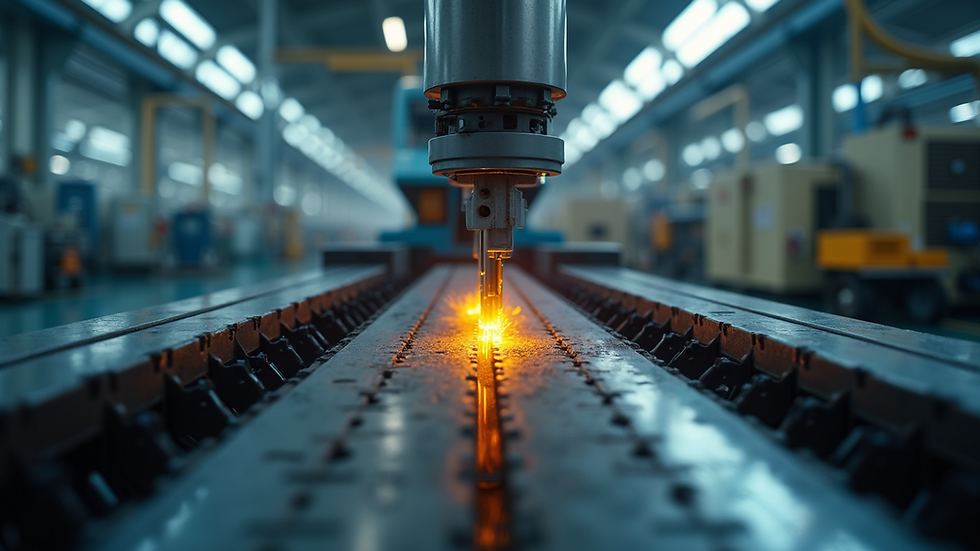How Equipment Financing Fuels Business Growth
- CCMB

- Aug 11
- 3 min read
In today’s competitive market, businesses need to stay agile and efficient to thrive. One of the key drivers of growth is having access to the right tools and machinery. However, purchasing equipment outright can be a significant financial burden, especially for small and medium-sized enterprises. This is where equipment financing comes into play, offering a practical solution to acquire essential assets without draining cash reserves. This article explores how equipment financing benefits businesses and supports their expansion goals.
Understanding Equipment Financing Benefits
Equipment financing benefits businesses by providing a flexible and cost-effective way to obtain the machinery and tools they need. Instead of paying a large upfront cost, companies can spread payments over time, preserving working capital for other operational needs. This approach helps businesses maintain cash flow while upgrading or expanding their equipment inventory.
Some of the key benefits include:
Improved cash flow management: Financing allows businesses to avoid large lump-sum payments.
Access to the latest technology: Companies can upgrade equipment regularly without heavy capital investment.
Tax advantages: Payments may be deductible as business expenses, reducing taxable income.
Preservation of credit lines: Financing equipment separately keeps other credit lines open for different needs.
Flexible terms: Financing agreements can be tailored to match business cash flow cycles.
For example, a freight company might finance a new fleet of trucks, enabling them to take on more clients without depleting their cash reserves. Similarly, a manufacturing firm can acquire advanced machinery to increase production capacity and improve product quality.

How Equipment Financing Benefits Business Expansion
When businesses invest in new equipment, they often see a direct impact on their growth potential. Equipment financing benefits companies by enabling them to:
Scale operations quickly: New equipment can increase production speed and volume.
Enter new markets: Specialized machinery can open doors to new product lines or services.
Enhance competitiveness: Up-to-date equipment improves efficiency and product quality.
Reduce downtime: Financing allows for timely replacement of outdated or broken equipment.
For instance, a construction company might finance heavy machinery to take on larger projects or multiple sites simultaneously. This capability can lead to increased revenue and market share. Additionally, businesses can avoid the risk of obsolescence by leasing or financing equipment with upgrade options.

What are typical terms for equipment financing?
Understanding the typical terms of equipment financing helps businesses make informed decisions. While terms can vary depending on the lender and the type of equipment, common features include:
Loan duration: Usually ranges from 1 to 7 years, depending on the equipment’s expected lifespan.
Interest rates: Can be fixed or variable, often influenced by creditworthiness and market conditions.
Down payment: Some lenders require a percentage upfront, while others offer 100% financing.
Payment schedule: Monthly, quarterly, or customized to align with business cash flow.
Ownership: At the end of the term, the business typically owns the equipment outright.
Early payoff options: Many agreements allow early repayment without penalties.
For example, a small bakery might finance an oven with a 5-year term and fixed interest rate, making predictable monthly payments that fit their budget. It’s important to compare offers and understand all fees and conditions before committing.

Practical Tips for Maximizing Equipment Financing Benefits
To get the most out of equipment financing, businesses should consider the following strategies:
Assess your needs carefully: Choose equipment that aligns with your growth plans and operational requirements.
Shop around for lenders: Compare rates, terms, and customer service to find the best fit.
Understand the total cost: Factor in interest, fees, and maintenance costs.
Plan your cash flow: Ensure payment schedules match your revenue cycles.
Keep equipment well-maintained: Proper upkeep extends the life and value of your assets.
Leverage tax incentives: Consult with a tax professional to maximize deductions.
By following these steps, businesses can avoid common pitfalls and ensure that financing supports their long-term success.
The Role of Equipment Financing in Sustainable Business Growth
Sustainable growth requires balancing investment with financial stability. Equipment financing benefits businesses by enabling them to invest in critical assets without compromising liquidity. This balance allows companies to innovate, improve productivity, and respond to market demands effectively.
Moreover, financing options often include environmentally friendly equipment, helping businesses reduce their carbon footprint and meet regulatory standards. This alignment with sustainability goals can enhance brand reputation and open up new customer segments.
In summary, equipment financing is a powerful tool that fuels business growth by providing access to essential resources, preserving cash flow, and supporting strategic expansion. Businesses looking to thrive in a dynamic market should consider this financing option as part of their growth strategy.
For more information on how to leverage equipment financing for your business, check out Capital Corp's page on equipment financing.

Comments